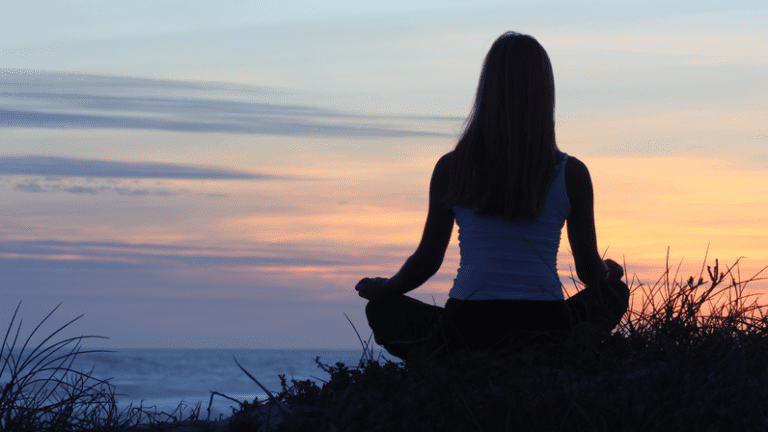How Yoga Reflects On Your Everyday Lifestyle
I am on my mat and things are starting to get really intense. I’m actually starting to freak out a little bit. “This is too hard! I want to give up. My hip is going to snap. I don’t feel like being in this stupid pose any longer! I wish the teacher would shut up about breathing!” I notice my thoughts related to this moment. I notice my behavioral tendency-wanting to give up when things get hard. Then, I breathe. I acknowledge my tendencies and let them pass. What a wonderful microcosm this mat is- a little world, a safe place to recognize and hash out all of my maladaptive behaviors and to hopefully (eventually) move beyond them and replace them with more positive ways of being.
What Your Mat Can Tell You About You
Irvin Yalom, an accomplished existential psychotherapist and author, often writes about the concept of a microcosm as it relates to group therapy. He explains that the therapy group functions as a social microcosm. Given enough time, “one behaves in the therapy group very similarly to the way one behaves in one’s outside social environment.” Any maladaptive behaviors present in one’s outside world are re-enacted in the group. The same is true in yoga practice. The mat functions as a microcosm–a little version of the whole life experience.
Any thoughts, behaviors, or tendencies that tend to come up for us off the mat are re-enacted on the mat. If we tend to be too hard on ourselves, it will show up on the mat. If we tend to be withdrawn or inattentive, it will show up on the mat. If we tend to compare ourselves to those around us, feeling either envious or superior, we will feel that way on the mat. If we tend to resent people telling us what to do or how to feel, it will show up. If we tend to have very fluid or very rigid boundaries, it will show up. If we tend to either give up or overextend ourselves, we will on the mat.
However, because the mat is such a little world, it is easier to recognize the tendencies as they reveal themselves. And because it is a safe world, in which no one is judging us or expecting anything from us, we can actually observe the tendencies instead of just reacting or defending ourselves. We don’t even have to do anything about it, just notice: “I’m doing this or feeling this right now. Do I always do this? Do I always think this about myself?” In time, you may choose to do something. You may choose another course of action; you may choose to let the negative thoughts pass; you may choose to be more compassionate with yourself; you may choose more life-affirming ways of being/thinking/feeling.
(Related: Read about the benefits of meditation here.
Huddle Up
So, the next time you are on your mat, notice your tendencies. Just simply notice. Maybe you will choose to take a small step towards balance by letting your negative thoughts pass during meditation. By letting go of your obsessive thoughts about all your work while or by telling yourself it’s OK if you don’t touch your foot to your head today all count as absolute progress. You might instead choose to turn your attention inward, towards being the best that you can be in that moment.
Those small changes on the mat will automatically translate into changes off the mat. Without even thinking about it, you will find yourself exhibiting those same positive ways of being in your life off the mat. After all, you do not turn into someone else when you enter the yoga studio — you are still you, on and off the mat. Any changes you make in yoga, you make in your life. It’s your personal space for bringing awareness, self-discovery, growth and change. Who knew your mat was so powerful?
Be prepared for the biggest moments by mastering the small ones in the studio.
How useful was this post?
Click on a star to rate it!
Average rating 0 / 5. Vote count: 0
No votes so far! Be the first to rate this post.




